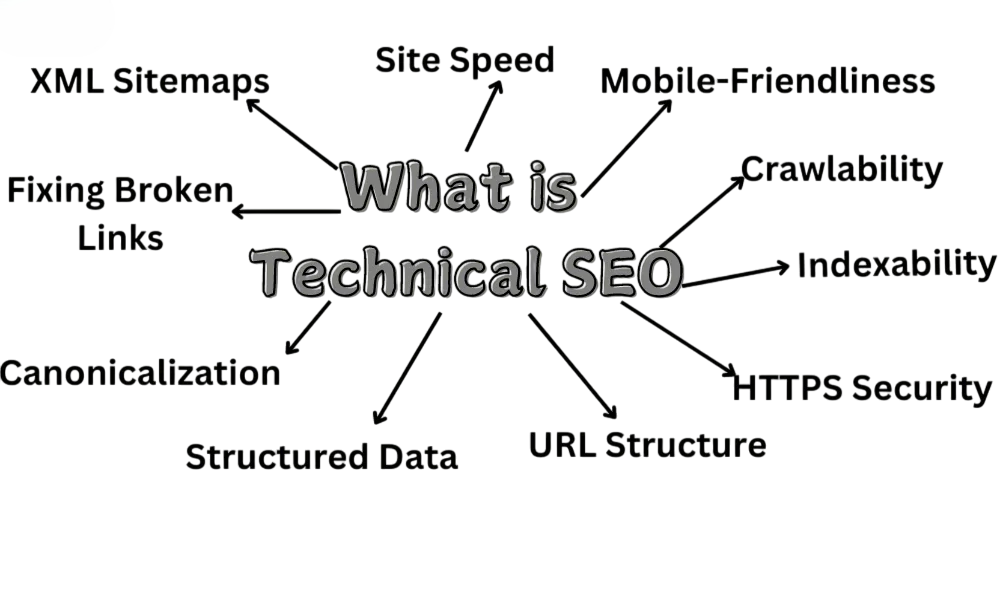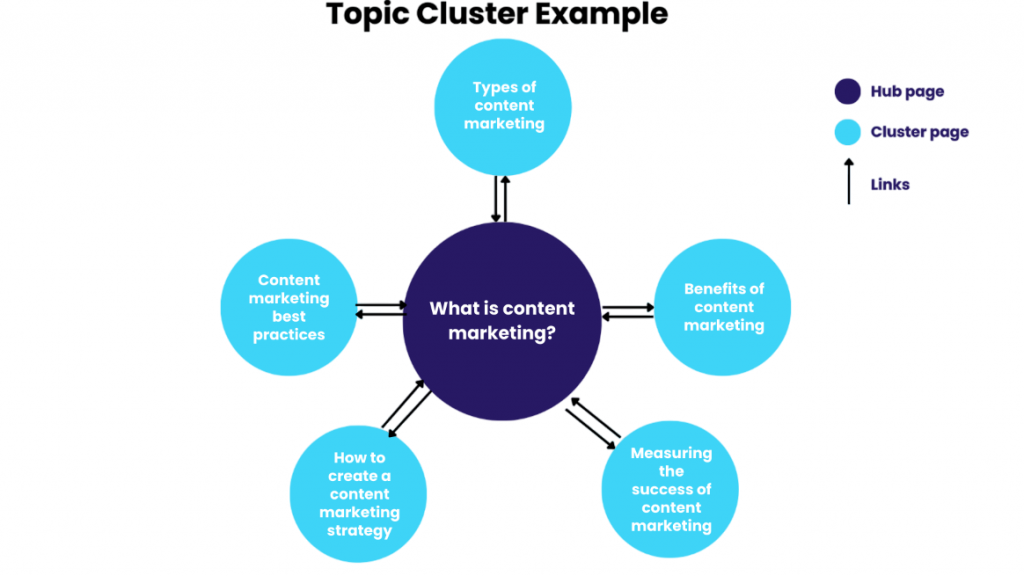
- On-Page SEO Basics
- Technical SEO Fixes
- Link Building Strategies
- Mobile-First Optimization
- Site Speed Improvements
- Content Clustering
- Structured Data and Schema
- Image Optimization
- Conclusion
On-Page SEO Basics
On-page SEO involves optimizing the elements within your website that directly affect your search engine rankings. This includes elements like title tags, meta descriptions, header tags, keyword usage, and content quality. Keyword research forms the foundation of on-page SEO, as it helps you understand what terms your target audience is searching for. Incorporating relevant keywords naturally into your content ensures that your pages are discoverable. Additionally, optimizing title tags and meta descriptions helps improve click-through rates by providing concise and attractive summaries in the SERPs. Header tags (H1, H2, H3, etc.) are essential for organizing content and enhancing readability. Search engines use these tags to understand the structure and relevance of the content. Another important aspect is ensuring that your content is original, informative, and engaging. Content that adds value to the reader is more likely to be shared and linked to, which further boosts SEO.Search Engine Optimization (SEO) plays a vital role in driving organic traffic to a website. It is the process of optimizing your website to rank higher in search engine results pages (SERPs), thereby increasing visibility and attracting more visitors without paid advertisements. Effective SEO requires a combination of various techniques ranging from on-page optimization to technical fixes, content strategies, and off-site methods. Each of these tactics works collectively to improve your site’s performance and appeal to both users and search engines.
Ready to Get Certified in Digital Marketing? Explore the Program Now Digital Marketing Online Training Offered By ACTE Right Now!
Technical SEO Fixes
Technical SEO involves optimizing your website’s infrastructure so that search engines can crawl and index it effectively. One of the most critical aspects of technical SEO is creating an XML sitemap, which provides a roadmap of your site to search engines. Ensuring your robots.txt file is correctly configured is equally important, as it guides search engine bots on which pages to crawl or ignore.

Fixing broken links, eliminating duplicate content, and correcting crawl errors are other essential components of technical SEO. Proper implementation of canonical tags helps prevent duplicate content issues, while a secure HTTPS connection improves trust and ranking. Implementing structured data and schema markup can further enhance your technical SEO by making your content more understandable to search engines.
Link Building Strategies
Create high-quality content that provides value to your audience. Great content earns backlinks naturally from other sites.
- Publish original research or data that’s unique and insightful. Websites love linking to credible, data-driven sources.
- Write guest posts on authoritative websites in your niche. It helps build backlinks and your online reputation.
- Use the skyscraper technique to improve existing top content. Make it better, then reach out to those linking to the original.
- Do personalized email outreach to relevant webmasters. Request backlinks by offering helpful, relevant content.
- Build genuine relationships with bloggers and influencers. Long-term connections often lead to natural backlink opportunities.
- Find broken links on related websites using tools. Suggest your content as a replacement to earn a link.
- Analyze competitor backlinks using tools like Ahrefs. Target the same sources to gain similar links.
- Submit to trusted directories and local business listings. Boost visibility and get easy backlinks from citations.
- Promote content on social media and niche communities. Drives traffic and increases chances of getting linked.
- Find niche resource pages and pitch your content for inclusion. These pages often link to helpful, relevant resources.
- Use HARO or similar platforms to answer journalist questions. Get featured with backlinks on high-authority news sites.
- Use internal linking to connect your own website’s content. Enhances SEO and distributes link equity across your site.
- Track unlinked brand mentions using alert tools. Reach out and ask them to turn the mention into a backlink.
- Optimize for fast loading speeds by compressing images and minimizing code. Speed is crucial for user experience and SEO on mobile devices.
- Simplify navigation with a clean layout and easy-to-tap menu buttons. Avoid clutter and make important links easily accessible.
- Use readable font sizes and proper line spacing for small screens. Prevent users from needing to zoom or scroll horizontally.
- Avoid intrusive pop-ups that cover content on mobile screens. Google may penalize sites with poor mobile user experiences.
- Keep content consistent between mobile and desktop versions. Don’t hide important text, images, or structured data on mobile.
- Test your site using Google’s Mobile-Friendly Test tool. This helps identify and fix mobile usability issues quickly.
- Focus on Core Web Vitals, especially for mobile loading and interactivity. Metrics like LCP, FID, and CLS impact rankings and user satisfaction.
- Avoid outdated tech like Flash and non-mobile-friendly formats. Use HTML5 and responsive frameworks instead.
- Place critical content above the fold on mobile screens. Users should see your main message without scrolling.
- Enable browser caching and Gzip compression for faster loads. These reduce server load and enhance mobile performance.
- Consider AMP (Accelerated Mobile Pages) for content-heavy sites. AMP delivers lightning-fast, streamlined mobile pages.
- Design mobile-friendly forms with large input fields and auto-fill support. Make them easy to use without pinch-zoom or extra effort.
- Optimize mobile SEO elements like title tags, meta descriptions, and headers. Ensure they’re concise, keyword-rich, and display well on small screens.
- Test on real mobile devices, not just emulators or previews. This helps catch real-world issues that may not show up in testing tools.
- Schema markup enhances your listings with rich results like star ratings, FAQs, and images. This can improve visibility and click-through rates in search results.
- Use schema types like Article, Product, Review, FAQ, Local Business, and Event based on your content. Accurate use helps search engines deliver more relevant search features.
- Test your structured data using Google’s Rich Results Test or Schema Validator. These tools identify errors or enhancements for your markup.
- Keep markup up to date with content changes to avoid discrepancies or search penalties. Always reflect real, visible content on your site in your schema.
- Implement schema via CMS plugins like Yoast, Rank Math, or manually in the HTML code. Choose a method that fits your technical skills and site structure.
To Explore Digital Marketing in Depth, Check Out Our Comprehensive Digital Marketing Online Training To Gain Insights From Our Experts!
Mobile-First Optimization
Use responsive design so your website adjusts to all screen sizes. This ensures a seamless experience on smartphones, tablets, and desktops.
Site Speed Improvements
Website speed is a significant ranking factor and directly impacts user experience. A slow-loading site can lead to high bounce rates and lower engagement, negatively affecting your rankings. To enhance site speed, start by optimizing images to reduce their file sizes without compromising quality. Compressing CSS, JavaScript, and HTML files also contributes to faster load times.Leveraging browser caching, using a content delivery network (CDN), and minimizing HTTP requests are other effective methods to improve speed. Tools like Google PageSpeed Insights and GTmetrix provide actionable insights and suggestions for boosting your website’s performance. Regular monitoring and updates ensure that your site remains fast and efficient.Improving site speed is essential for both user experience and SEO. A fast-loading website reduces bounce rates, increases engagement, and positively impacts rankings. Key strategies include compressing images without losing quality, enabling browser caching, minimizing JavaScript and CSS files, and using a content delivery network (CDN) to serve content faster to global users. You should also leverage lazy loading for images and videos, eliminate render-blocking resources, and consider upgrading to a faster web host or server. Regularly testing your site with tools like Google PageSpeed Insights or GTmetrix can help identify performance bottlenecks and guide ongoing improvements.
Looking to Digital Marketing Training? Discover the Digital Marketing Expert Masters Program Training Course Available at ACTE Now!
Content Clustering
Content clustering is an advanced SEO technique that involves grouping related content around a central pillar page. This strategy improves topical authority and enhances internal linking. A pillar page broadly covers a specific topic and links to several related subtopics or cluster content. Each piece of cluster content, in turn, links back to the pillar page.This internal linking structure helps search engines understand the relationship between different pieces of content, which can boost the ranking of all pages involved. It also improves user navigation by guiding them to more in-depth information. Creating a well-planned content cluster requires keyword mapping, content audits, and strategic planning to ensure all relevant subtopics are covered comprehensively.

Content clustering is a strategic SEO technique that involves organizing website content around central topics, known as “pillar content,” supported by related subtopics or “cluster content.” The pillar page broadly covers a main topic, while the cluster pages go deeper into specific aspects of that topic and link back to the pillar. This internal linking structure helps search engines better understand the relationship between your content pieces, improving crawlability and topical authority. Content clustering enhances user experience by guiding visitors through related information, which can increase engagement, time on site, and ultimately, search rankings.
Structured Data and Schema
Structured data is code added to your website to help search engines understand your content. It’s usually written in JSON-LD and follows Schema.org vocabulary.
Structured data is not a ranking factor, but it enhances how your site appears in SERPs.
Preparing for Digital Marketing Job Interviews? Have a Look at Our Blog on Digital Marketing Interview Questions and Answers To Ace Your Interview!
Image Optimization
Images play a vital role in enhancing user experience, but they must be properly optimized to support SEO. Start by using descriptive file names and adding alt text that includes relevant keywords. Alt text not only helps search engines understand the content of the images but also improves accessibility for visually impaired users.Compressing image files without sacrificing quality reduces load times and improves site speed. Using modern image formats like WebP can further enhance performance. Additionally, implementing lazy loading ensures that images only load when they come into the viewport, reducing initial page load times. Structured data for images can also be used to enhance their appearance in search results. Image optimization is crucial for improving website speed, user experience, and SEO performance. It involves compressing images to reduce file size without sacrificing quality, choosing the right file format (like JPEG for photos, PNG for graphics with transparency, or WebP for modern browsers), and using descriptive, keyword-rich file names and alt text to help search engines understand the image content. Additionally, implementing lazy loading ensures images load only when they come into the user’s viewport, speeding up initial page load times. Properly optimized images reduce bandwidth usage, improve page speed scores, and contribute to better rankings and accessibility.
Conclusion
Increasing organic traffic through SEO is a multifaceted process that requires consistent effort and strategic planning. By mastering on-page elements, addressing technical issues, building quality backlinks, and staying updated with the latest trends like voice search and content clustering, you can significantly improve your website’s visibility. Utilizing the right tools and continuously tracking your progress ensures sustained success in the ever-evolving landscape of search engine optimization.In today’s digital landscape, optimizing your website across key areas like mobile-first design, site speed, content structure, structured data, and image optimization is essential for driving traffic, enhancing user experience, and improving search engine rankings. Implementing these strategies holistically not only helps your site perform better technically but also builds authority and trust with both users and search engines. Staying up-to-date with best practices and continually refining your approach will ensure sustained growth and online success.




